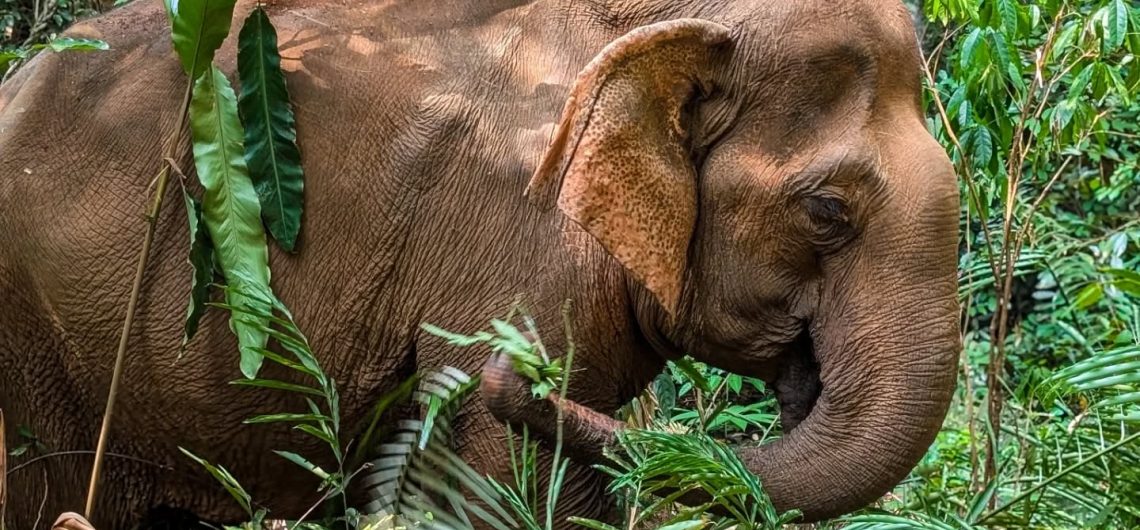Plan your next adventure in Mondulkiri, Cambodia—a top eco-tourism destination with jungle trails, wildlife-rich forests, and the famous Bou Sra Waterfall. Explore ethical elephant projects and connect with the traditions of the Bunong people.
Tucked away in Cambodia’s remote eastern frontier, far from the tourist throngs of Angkor or Phnom Penh, lies a province that feels like a different world entirely. Mondulkiri—meaning “Meeting of the Hills” in the Khmer language—is the country’s largest province, yet one of its least populated. Here, the air is cooler, the hills roll endlessly into misty horizons, and the scent of pine forests mingles with the aroma of freshly roasted coffee. Known to many as the “Switzerland of Cambodia”, this is a place where the pace slows, nature reigns, and the heart of indigenous culture beats strong.
A Land Apart – Location & First Impressions
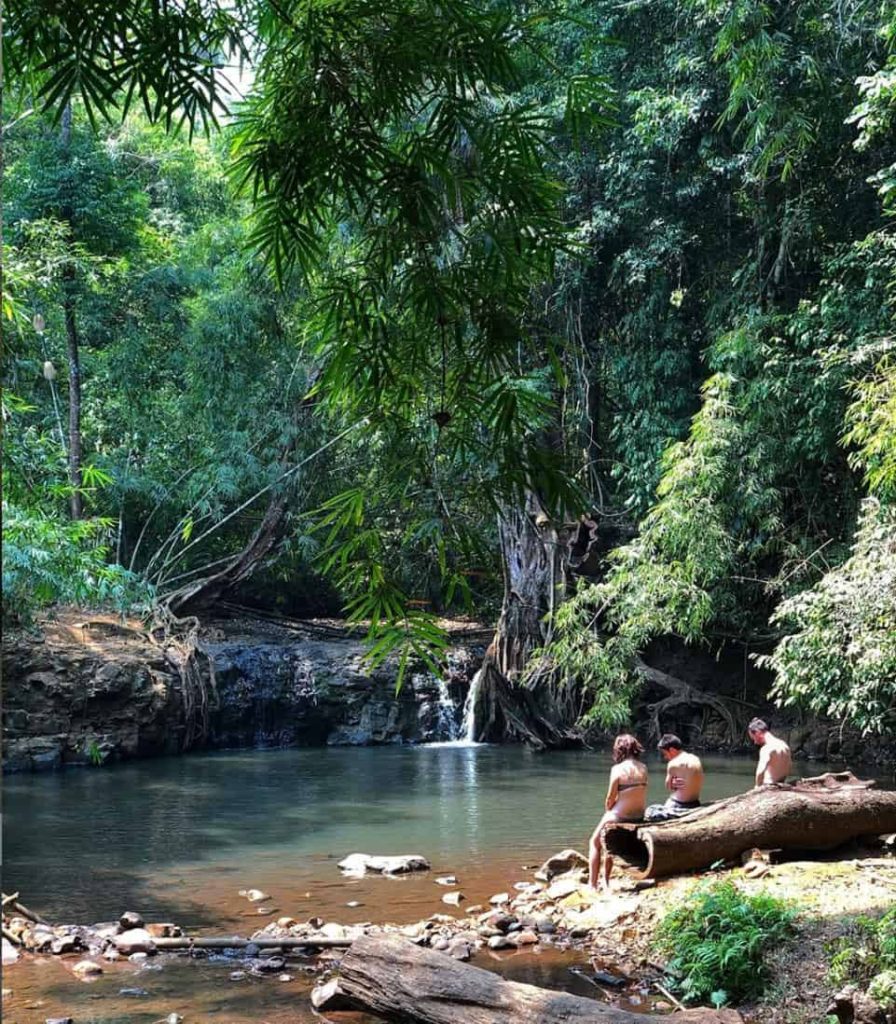
Mondulkiri sits in Cambodia’s far east, bordering Vietnam’s Đắk Lắk Province. The capital, Sen Monorom, is about 370 kilometers from Phnom Penh—a journey of six to eight hours by road. Getting there feels like peeling away layers of Cambodia’s geography: the flat rice paddies give way to undulating hills, then to cooler pine-covered plateaus.
Arrive in the late afternoon, and you’ll be greeted by a scene that seems more alpine than tropical. The sky turns gold over sea-like forests, and a cool breeze slips through the valleys. In a country known for its hot, humid lowlands, Mondulkiri is refreshingly different.
Echoes of the Past – History of Mondulkiri
For centuries, Mondulkiri was home to the Bunong (Phnong) people, one of Cambodia’s oldest indigenous groups. They lived in harmony with the land, practicing swidden agriculture, foraging in the forest, and venerating nature through animist beliefs. Elephants, both wild and domesticated, were central to Bunong life—used for transport, farming, and as spiritual companions.
French colonialists arrived in the early 20th century, drawn by the cool climate and fertile soil. They introduced coffee and pepper cultivation, building small settlements and rudimentary roads. But Mondulkiri remained isolated; even during the French era, few outsiders ventured here.
Tragically, during the Khmer Rouge regime in the 1970s, much of the province’s population was displaced or killed. Entire villages vanished, and cultural traditions suffered. Recovery has been slow, but in the past two decades Mondulkiri has begun to re-emerge—not as a bustling cityscape, but as an eco-tourism frontier where nature and heritage are the main draws.
People of the Hills – Ethnic Groups & Culture
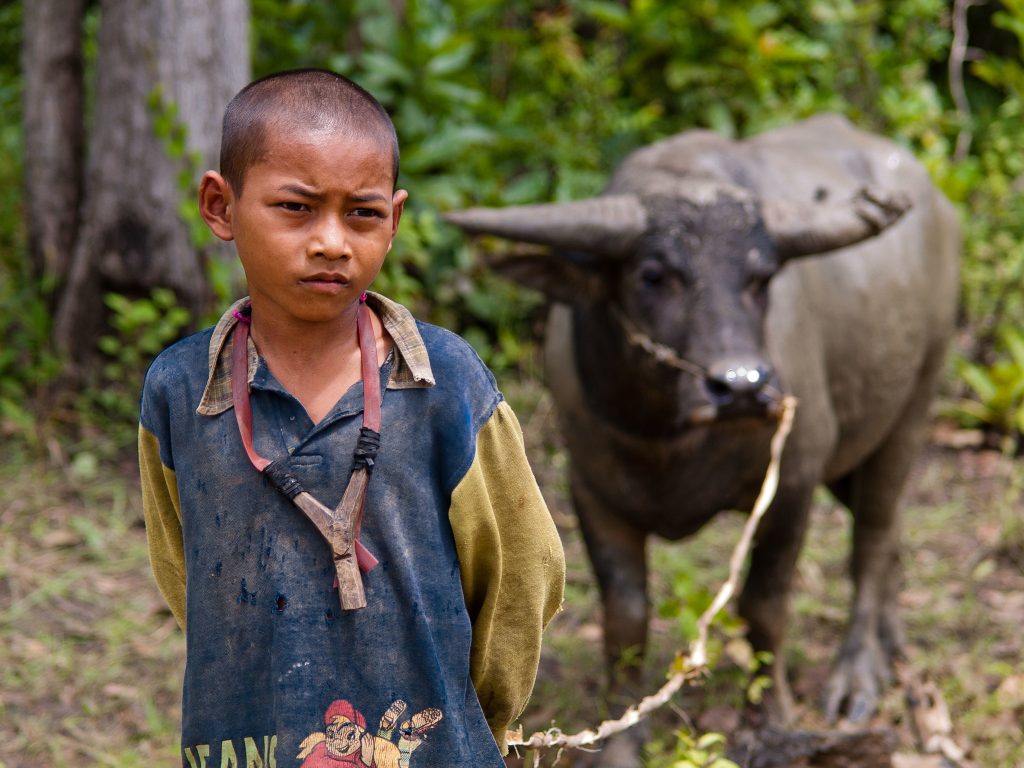
The Bunong people still make up a large proportion of Mondulkiri’s residents. They speak their own language, maintain traditional weaving and bamboo crafts, and hold onto customs that pre-date modern Cambodia. Central to their belief system is the idea of spirit forests—sacred groves where important rituals, ancestor worship, and community decisions take place.
Visitors may be invited to share jar wine—a fermented rice wine sipped through long bamboo straws—or to join in a village celebration. Hospitality here is heartfelt, rooted in a deep sense of community.
Alongside the Bunong, Khmer settlers, Lao minorities, and ethnic Vietnamese contribute to the province’s cultural tapestry. This blend is most visible in the local markets of Sen Monorom, where forest herbs, coffee beans, woven baskets, and Vietnamese baguettes share space on colorful stalls.
Where Nature Steals the Show – Landscapes & Highlights
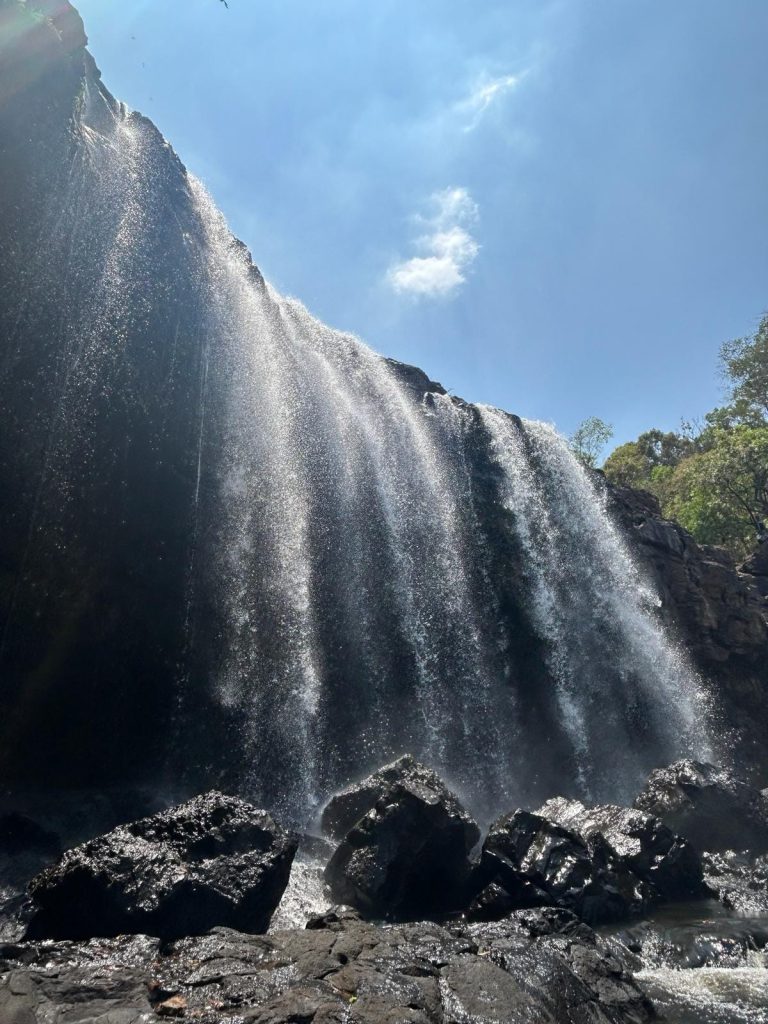
Mondulkiri is a province of wide horizons. Its landscapes shift from pine forests to grassy savannas, from dense jungle to plunging waterfalls.
Bou Sra Waterfall
The crown jewel of Mondulkiri’s natural wonders, Bou Sra Waterfall is a three-tiered cascade thundering into the valley below. Located about 43 kilometers from Sen Monorom, it’s the largest and most famous waterfall in Cambodia. During the rainy season, the water roars with immense power, creating rainbows in the mist.
Sea Forest
On the high plateau near Sen Monorom lies the Sea Forest, where waves of pine stretch as far as the eye can see. At sunrise, the valleys fill with mist, creating the illusion of an ocean rolling beneath the hills. It’s a favorite spot for photographers and nature lovers.
Other Waterfalls
Mondulkiri is dotted with smaller but equally enchanting waterfalls: Sen Monorom Waterfall—just a short walk from town—is perfect for a quick swim, while Dak Dam Waterfall, near the Vietnamese border, offers serene surroundings for picnics.
Wild at Heart – Wildlife & Conservation
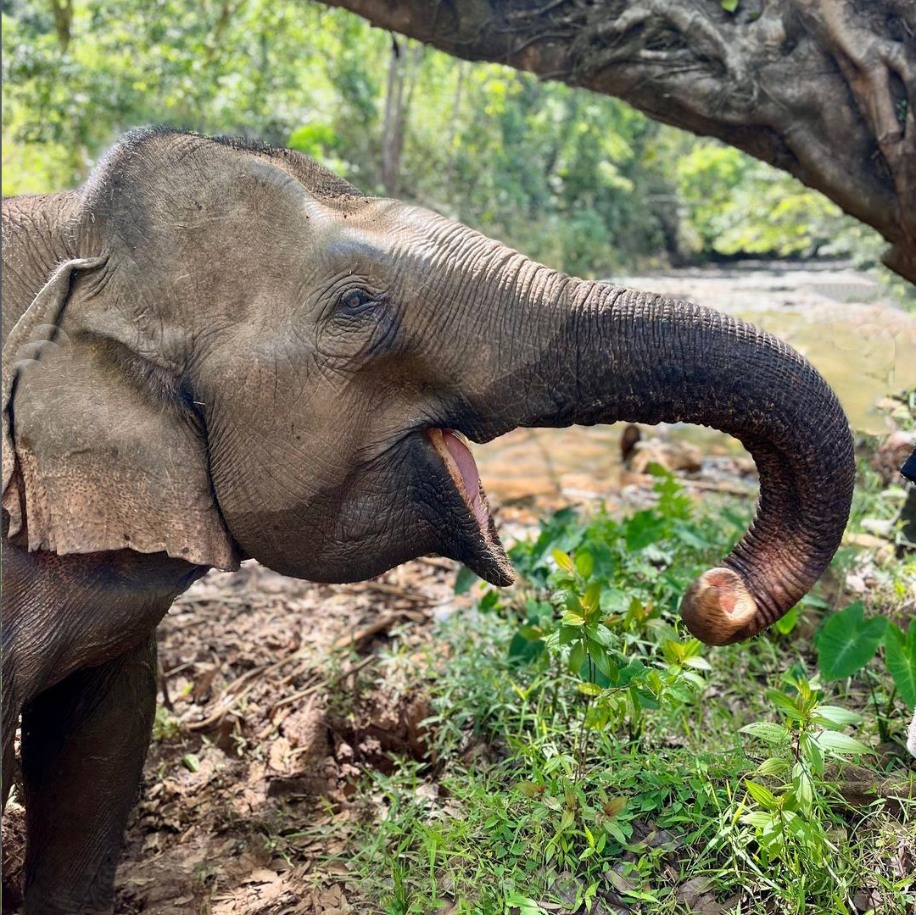
Mondulkiri is part of the Eastern Plains Landscape, one of Southeast Asia’s last great wildernesses. Its forests shelter elephants, gibbons, leopards, banteng (wild cattle), and an astonishing variety of birdlife.
For travelers, one of the most meaningful experiences is visiting the Elephant Valley Project (EVP). This ethical sanctuary rescues elephants from logging and tourism industries, giving them a safe, natural environment to roam. Instead of riding, visitors can observe the elephants bathing, foraging, and interacting freely—learning about the animals’ histories and the Bunong traditions tied to them.
WWF and other NGOs are active in the area, working to protect forests and wildlife from poaching and deforestation. Trekking with local guides not only supports conservation but also deepens your understanding of the delicate balance between nature and culture here.
Adventures in the Highlands – Things to Do
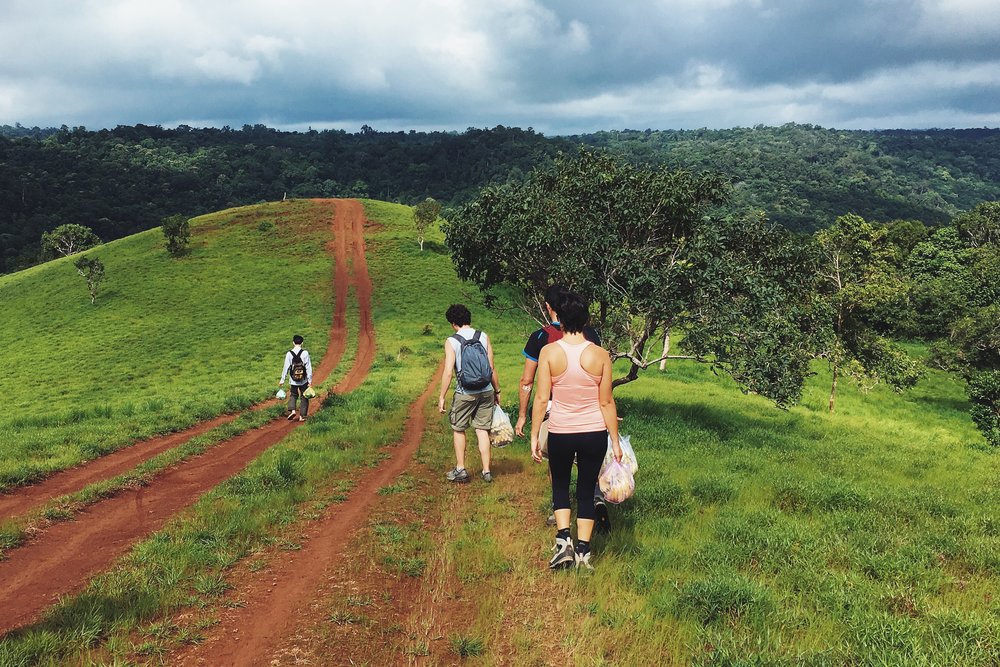
Mondulkiri invites travelers to slow down, breathe deeply, and engage with the land. Here are the best things to enjoy on a Cambodia private tour to Mondulkiri, offering nature, culture, and adventure experiences.
- Trekking & Nature Walks: Multi-day treks take you through dense forests, across streams, and into remote Bunong villages. Day hikes are also possible for those short on time.
- Village Homestays: Spend a night or two with a Bunong family. Help with cooking, learn about traditional medicine, and join in evening storytelling around the fire.
- Coffee Plantation Tours: Visit small farms to see how coffee is grown, harvested, and roasted in the cool highland climate.
- Birdwatching: Mondulkiri is a birder’s paradise, home to rare species like the giant ibis and green peafowl.
- Motorbike or Bicycle Rides: For the adventurous, rent a bike and explore the winding dirt roads, discovering hidden waterfalls and scenic viewpoints.
Flavors of the Highlands – Food & Drink
Dining in Mondulkiri is a delightful mix of Khmer, Bunong, and Vietnamese influences. Try Bunong bamboo soup, made with fresh forest vegetables, or sample wild boar grilled over an open fire. In the markets, look for sticky rice cooked in bamboo tubes, a portable snack for trekkers.
Coffee lovers will be in heaven—the local beans are rich and aromatic, often served as strong black brews or iced Vietnamese-style with condensed milk. In the evenings, warm up with a cup of locally made rice wine, often shared communally during gatherings.
When to Visit – Seasons & Climate
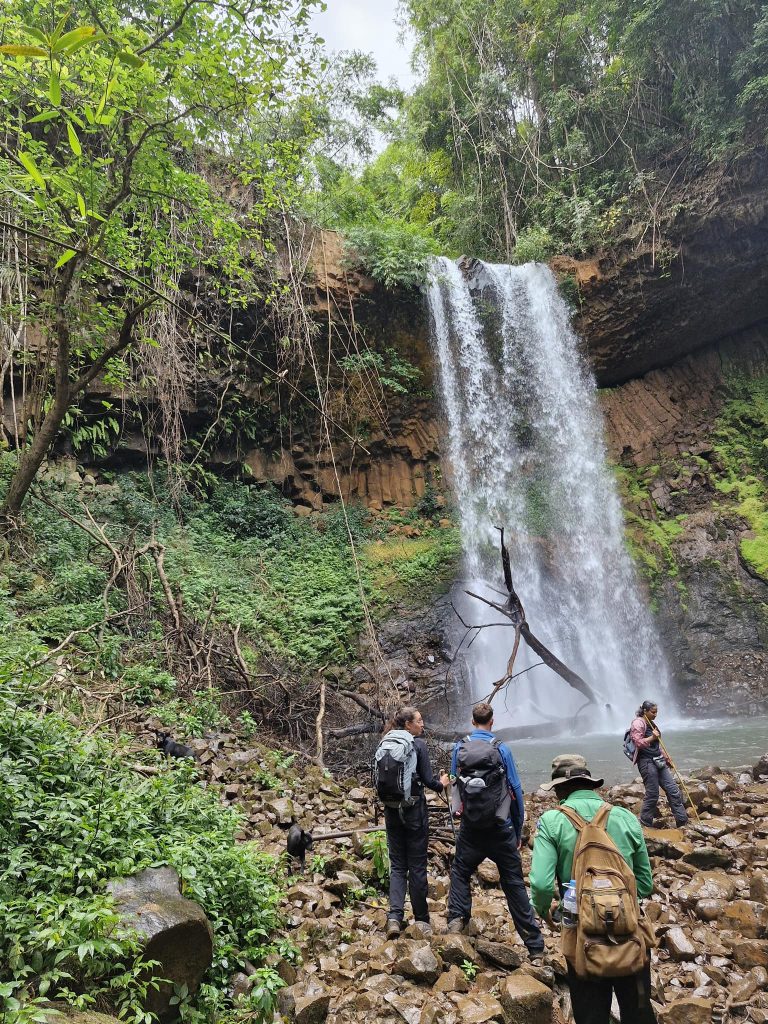
Mondulkiri’s climate is cooler than much of Cambodia, with temperatures ranging from 20°C to 25°C in the dry season. The best time to visit is from November to February, when the air is crisp, skies are clear, and trekking is most comfortable.
The rainy season (May–October) transforms the landscape into a lush green wonderland, and waterfalls are at their most impressive—but muddy roads can make travel challenging.
Practical Travel Tips
- Getting There: From Phnom Penh, buses and minivans take 6–8 hours; private cars offer more comfort.
- Getting Around: Hire a motorbike in Sen Monorom or join guided tours for out-of-town sights.
- Money: Bring cash—ATMs are limited, and card payments rare.
- Packing: Warm clothes for evenings, sturdy shoes for trekking, and rain gear in wet season.
- Responsible Tourism: Avoid elephant rides; support ethical sanctuaries and community-run projects.
The Spirit of Mondulkiri
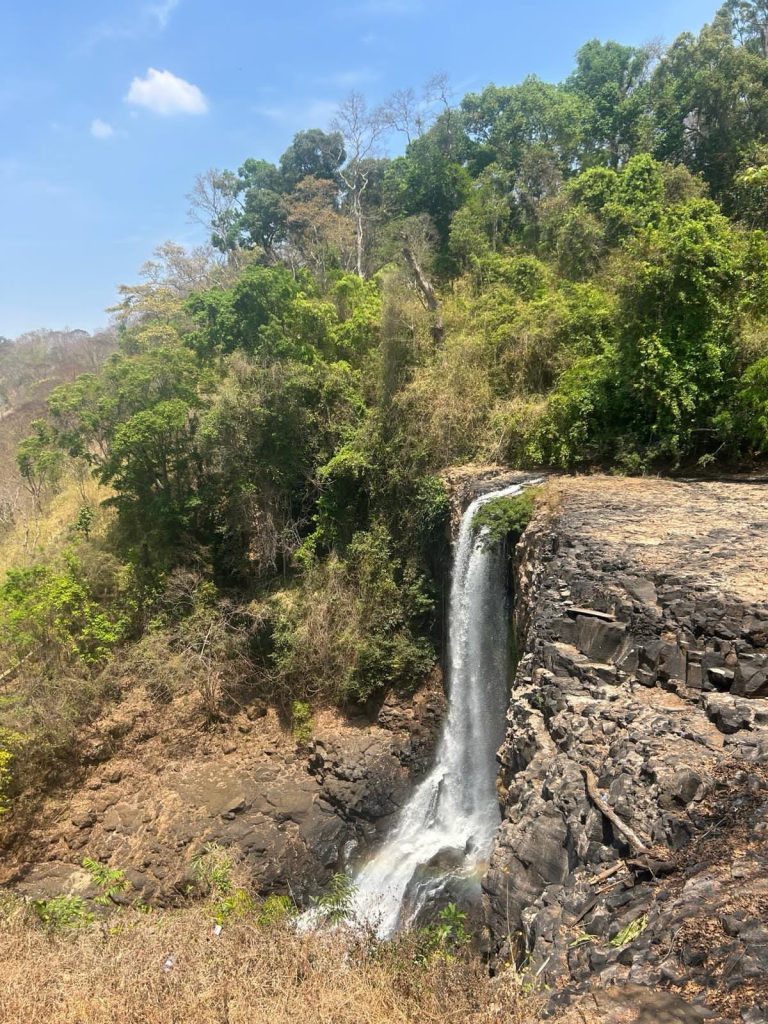
What sets Mondulkiri apart isn’t just its scenery—it’s the way life here is deeply intertwined with nature. Mornings begin with mist rolling over the hills; afternoons are filled with the sound of cicadas and distant waterfalls; evenings bring starlit skies untouched by city glare. The Bunong people’s connection to their forests and elephants offers a reminder that progress and tradition can coexist—if nurtured carefully.
Why Mondulkiri Should Be on Your Cambodia Itinerary
If Siem Reap is Cambodia’s crown of history and Phnom Penh its beating urban heart, Mondulkiri is its soul. This is a place for travelers who seek authentic encounters, untamed landscapes, and the quiet joy of discovering a corner of the world that still moves to the rhythms of nature.
Whether you come for a weekend escape or linger for weeks, Mondulkiri Cambodia has a way of staying with you—etched in the memory like the silhouette of its hills against a golden sunset.

